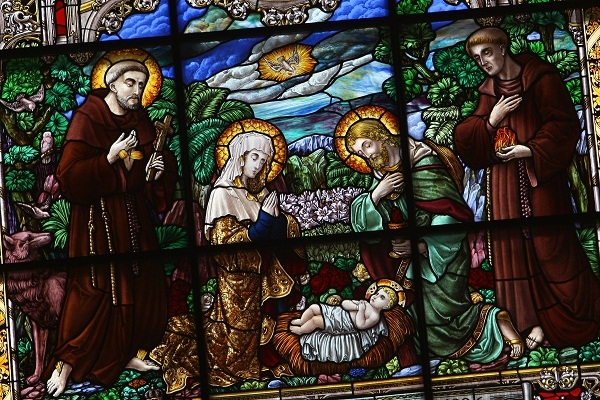‘Prayer’
Prayer the Church’s banquet, angels’ age,
God’s breath in man returning to his birth,
The soul in paraphrase, heart in pilgrimage,
The Christian plummet sounding heaven and earth;
Engine against the Almighty, sinner’s tower,
Reversed thunder, Christ-side-piercing spear,
The six-days-world-transposing in an hour,
A kind of tune, which all things hear and fear;
Softness, and peace, and joy, and love, and bliss,
Exalted manna, gladness of the best,
Heaven in ordinary, man well dressed,
The milky way, the bird of paradise,
Church-bells beyond the stars heard, the soul’s blood,
The land of spices; something understood.
St Augustine argued that Christians pray for themselves, not for God. God is self-sufficient and doesn’t need anything from his creations. Men and women, on the other hand, need a lot of help getting by in a difficult world, and prayer is a way of finding that aid. Prayer is a means of acknowledging what’s really important and worship is a set of symbols of the only true sacrifice Christians are required to offer to their God – a life lived in love for others. Prayer’s ultimate end isn’t reward in this world or even the next, but the ability to live as we would do if all human beings formed one perfect charitable community.
George Herbert was alive to what the Psalmist (and Archbishop Laud) called ‘the beauty of holiness’. If faith is, amongst other things, a project for living well with others, then one of the resources that project can call upon is aesthetic strength. For beauty exerts a power over people. Wartime propagandists know that the beauty of landscape can inspire sacrifice. Advertisers (and plenty of other people) know that erotic beauty can make us suspend our better judgement. And well-written prose is more convincing simply because it is well-written. Experiences of beauty shape and reshape us, ordering our sense of what we value, and opening us to new ideas by making us hold what we thought we knew in suspense.
In this poem, Herbert evokes the manner in which prayer can be an overwhelming aesthetic activity. The whole poem is a single sentence but it is grammatically incomplete having no main verb. We assume we are to understand ‘Prayer is the Church’s banquet…’, but the ‘is’ is absent, held out of view and in suspense (note also that prayer is ‘the Church’s banquet’, not God’s). Then all the subsequent clauses pile in one after the other without any conjunctions. On their own these fragments are difficult to make sense of. What is ‘reversed thunder’ like? Or ‘the soul in paraphrase’?
Not that the poem is impenetrable. In fact it seems intelligible precisely because its meaning doesn’t need to be pinned down. It is a kaleidoscope spiralling through a succession of moods. There is a sensation of motion and return in the first stanza, of combat in the second, gladness in the third and wonder in the final couplet. This dazzling display – like the sun moving behind a wall of stained glass – is the meaning of the poem. Beyond grammar, or any argument which could be paraphrased and defended, is ‘something understood’.
‘Prayer’ seems to be spoken by someone who has become – at least temporarily – rapturously overcome by the beauty of their own activity of praying. They can’t be disentangled from it. It’s hard to imagine that this could be sustained for long, or that such a state would be compatible with all the demands of life. But this moment is a picture of what the individual in prayer aspires to. It is an instance of complete identification between the believer and the object of their belief, dissolved together in the votary’s imagination thanks to beauty’s ability to make us suspend our normal understanding of things. It makes impossible things – like living a life devoted entirely to loving others – seem possible. This is Herbert’s argument. The beauty of holiness can make holiness something believed in.






Comments